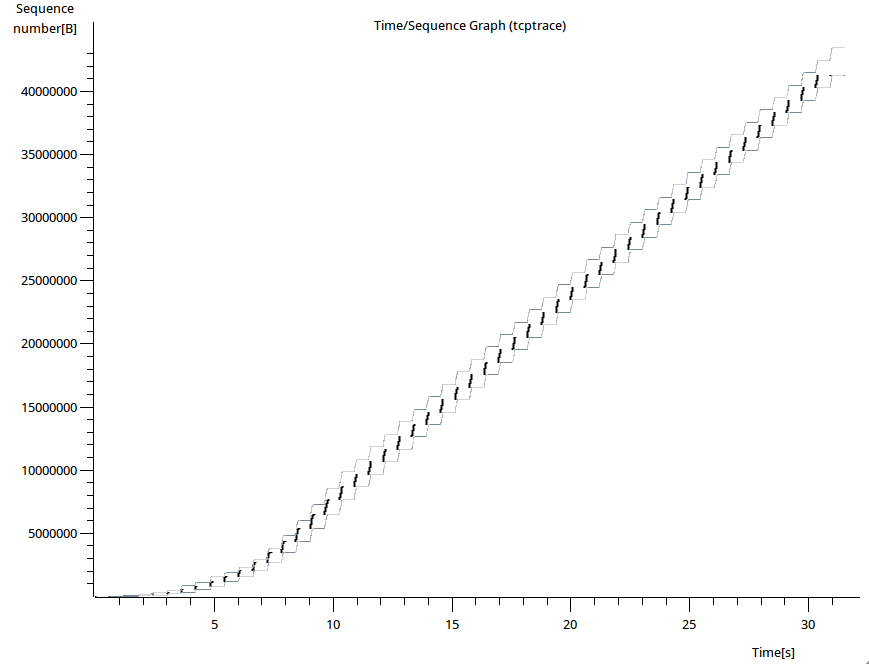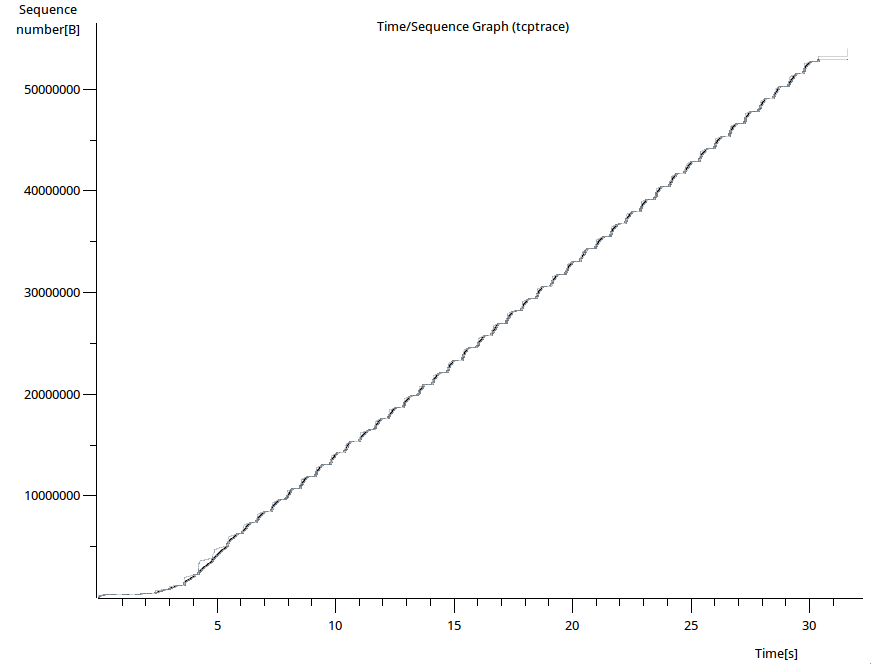3 Simulation results » History » Version 12
« Previous -
Version 12/32
(diff) -
Next » -
Current version
MERIOCHAUD, Antoine, 03/23/2016 10:08 AM
3. Simulation results¶
Now we have .pcap files with all the informations about the packets exchanged during the Iperf command. We will use Wireshark to produce curves with these files.
First, we will analyze the evolution of sequence numbers.
On the Time/Sequence graph with Wireshark, the upper curve corresponds to the receiver window, the middle one is the TCP segments that are sent and the lowest one is the actual ACK number.

Figure 1 : Evolution of sequence numbers without PEPsal

Figure 2 : Evolution of sequence numbers without PEPsal (zoom)
In these two figures we observe a classical evolution of sequence numbers using TCP. We clearly observe the slow start phase during the first 9 seconds and then we are in a congestion avoidance phase without errors. When we zoom on the curve, we can see the packets are sent by burst. This is because we have a huge delay so the transmission is limited by the window size (85KB). Consequently the terminal sends many packets until the window is full, then it has to wait acknowledgments before being able to send again.
Now we will observe the same curves but with PEPsal activated.

Figure 3 : Evolution of sequence numbers with PEPsal

Figure 4 : Evolution of sequence numbers without PEPsal (zoom)
